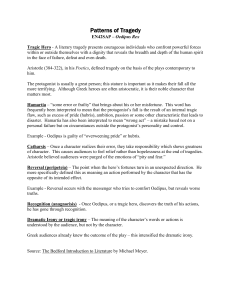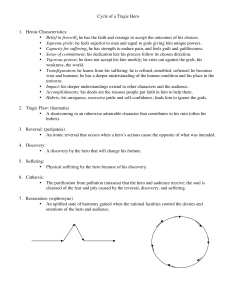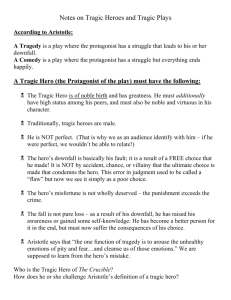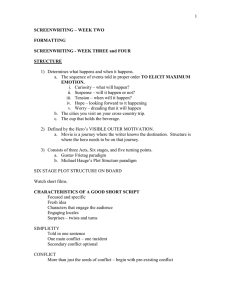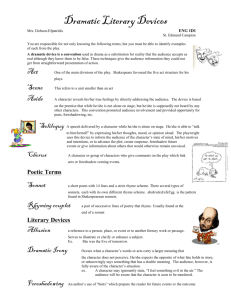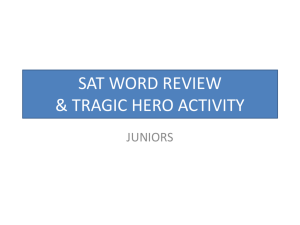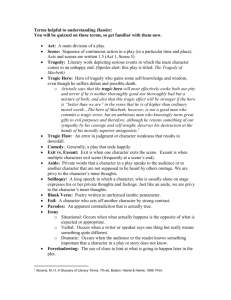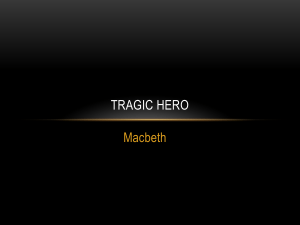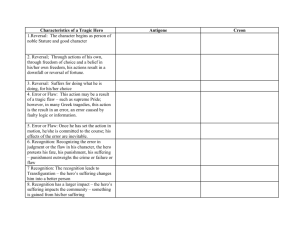Freytag's Pyramid adapted from Gustav Freytag's Technik des
advertisement
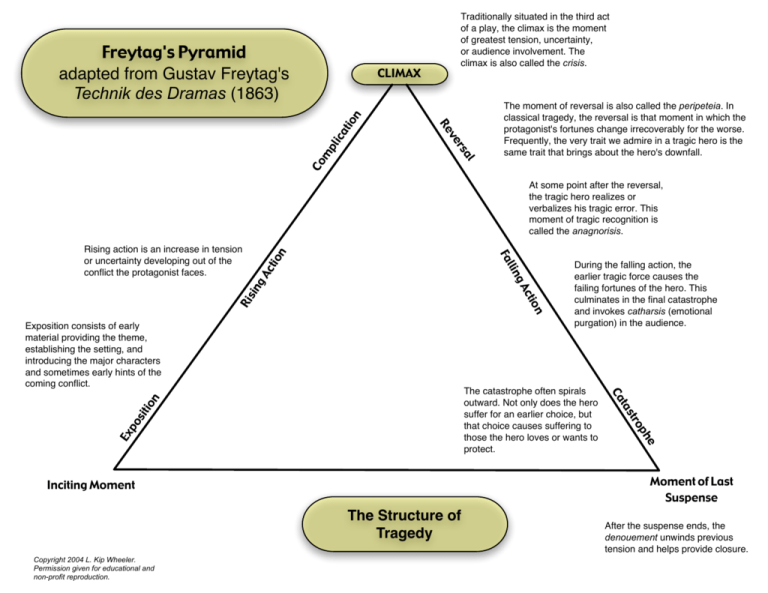
Freytag's Pyramid adapted from Gustav Freytag's Technik des Dramas (1863) pl ica m Co al rs ve Re tio n CLIMAX Traditionally situated in the third act of a play, the climax is the moment of greatest tension, uncertainty, or audience involvement. The climax is also called the crisis. The moment of reversal is also called the peripeteia. In classical tragedy, the reversal is that moment in which the protagonist's fortunes change irrecoverably for the worse. Frequently, the very trait we admire in a tragic hero is the same trait that brings about the hero's downfall. Ri on cti sin gA gA llin cti Fa Rising action is an increase in tension or uncertainty developing out of the conflict the protagonist faces. on At some point after the reversal, the tragic hero realizes or verbalizes his tragic error. This moment of tragic recognition is called the anagnorisis. Exposition consists of early material providing the theme, establishing the setting, and introducing the major characters and sometimes early hints of the coming conflict. e ph tro n io po sit s ta Ex Ca The catastrophe often spirals outward. Not only does the hero suffer for an earlier choice, but that choice causes suffering to those the hero loves or wants to protect. Moment of Last Suspense Inciting Moment The Structure of Tragedy Copyright 2004 L. Kip Wheeler. Permission given for educational and non-profit reproduction. During the falling action, the earlier tragic force causes the failing fortunes of the hero. This culminates in the final catastrophe and invokes catharsis (emotional purgation) in the audience. After the suspense ends, the denouement unwinds previous tension and helps provide closure.

